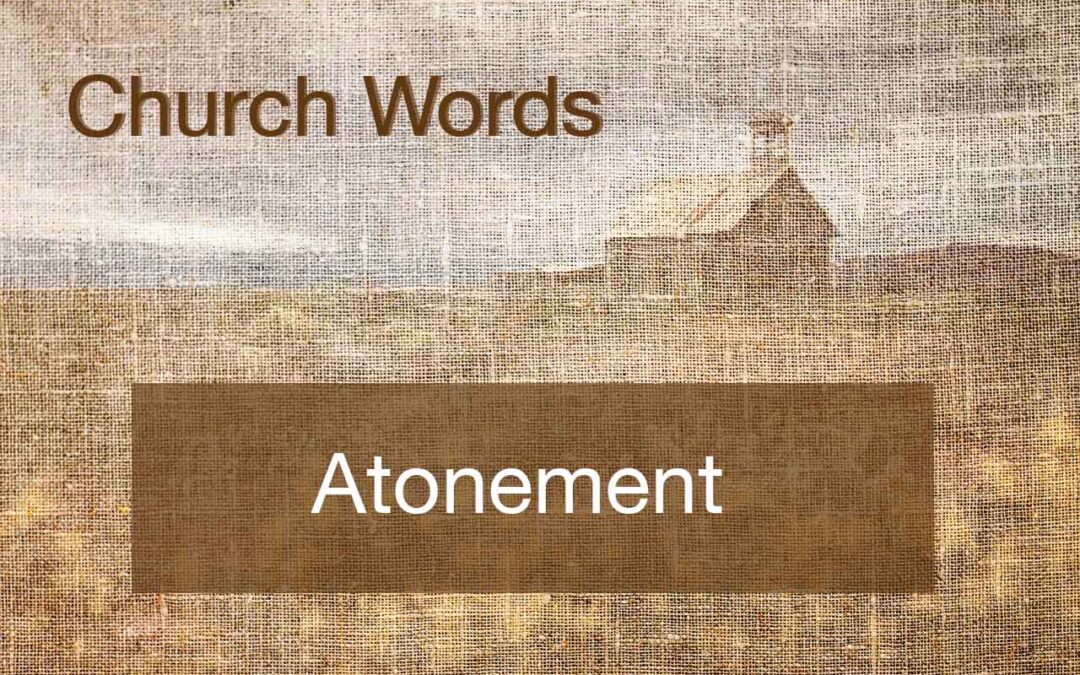The dictionary defines atonement as “reparation for wrong or injury.” In other words it is making things right with a person you have injured in some way. Atonement is God’s plan for bringing us back into relationship with him. In a remarkable juxtaposition, biblical atonement is God taking the final step to fix what sin broke. When sin entered the world our intimate connection with him was severed and it was not absolutely restored until Jesus came to make it right himself. Beginning in Genesis and ending in Revelation, the entire biblical narrative describes the steps God has taken to reach out to sinful people.
There were two kinds of atonement described in the Old Testament. The first was how one person could make things right when they or their animal injured another. The other was how people could make things right with God. The price paid for sin often resulted in the death of a living creature. The first recorded death of an animal resulting from sin is apparently Genesis 3:21. God clothed a naked and sinful Adam and Eve with animal skins. The first recorded sacrifices to God were those of their sons, Cain and Able. The were probably not to atone for sin, but sin messed that up, too.
With the implementation of the law God gave Moses, sins were typically atoned for through the sacrifice of goats, sheep and birds. “For the life of a creature is in the blood, and I have given it to you to make atonement for yourselves on the altar; it is the blood that makes atonement for one’s life” (Leviticus 17:11 | NIV). The atoning sacrifice restored a sinful person or nation to God. The writer of Hebrews described it like this “the law requires that nearly everything be cleansed with blood, and without the shedding of blood there is no forgiveness” (Hebrews 9:22 | NIV). The Jewish Day of Atonement sacrifice was a unique, three-part, national sacrifice requiring two goats. One goat was killed, symbolizing the punishment God exacts for sin. A second goat, a “scapegoat” was sent out into the wilderness to symbolize the actual removal and disappearance of sin. The slaughtered sacrifice was then burned to symbolize the all-consuming power of God over sin.
In the New Testament, ransom, redeem and atone are closely linked. Each word implies a quid pro quo, the giving of something to obtain something. They all describe what Jesus did on our behalf. We get a glimpse of how God’s plan will ultimately play out in terms of the Old Testament Mosaic covenant in the words of John the Baptist. When he saw Jesus he proclaimed, “Look, the Lamb of God who takes away the sin of the world!” (John 1:29 | NIV) Jesus fulfilled the law and accomplished what the law could never do by becoming the perfect sacrifice for sin. “For you know that it was not with perishable things such as silver or gold that you were redeemed from the empty way of life handed down to you from your ancestors, but with the precious blood of Christ, a lamb without blemish or defect.” (1 Peter 1:18-19). The term many Christians used in connection with the price Jesus paid for the sins of the world is substitutionary or vicarious atonement. Jesus is our substitute in God’s eyes. “For the wages of sin is death, but the gift of God is eternal life in Christ Jesus our Lord” (Romans 6:23). He paid the price for our sins and effected the final reconciliation of sinful humankind to a holy God. “In him and through faith in him we may approach God with freedom and confidence” (Ephesians 3:12).

Recent Comments